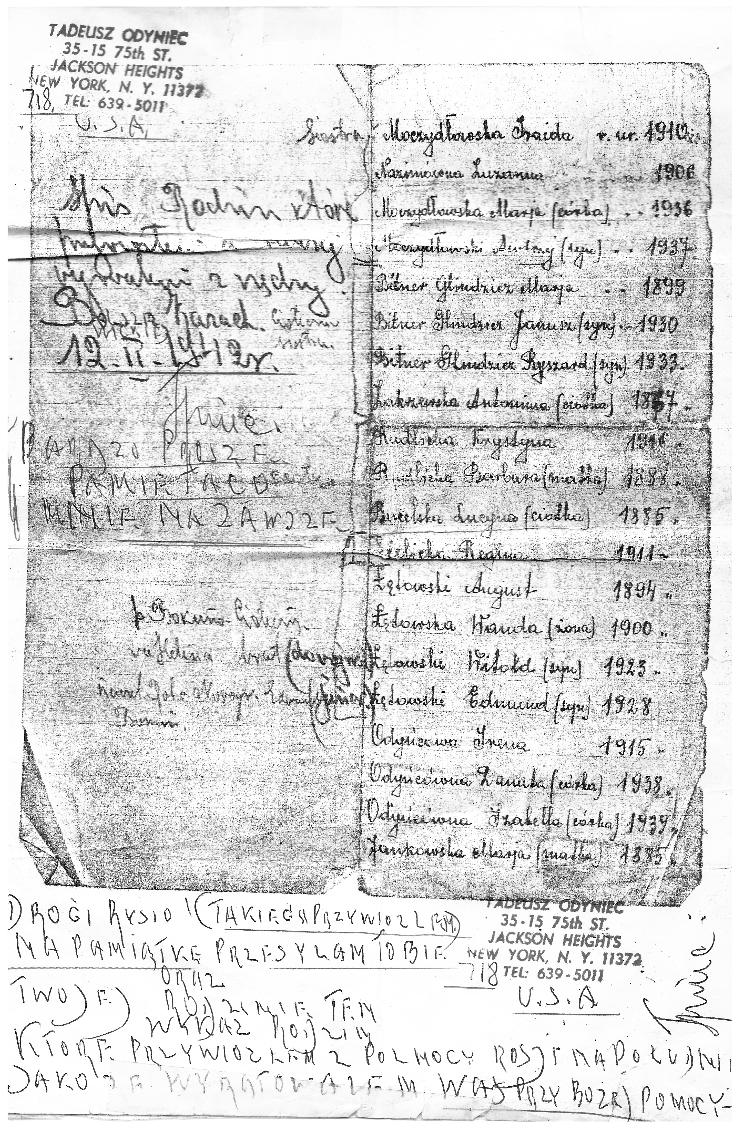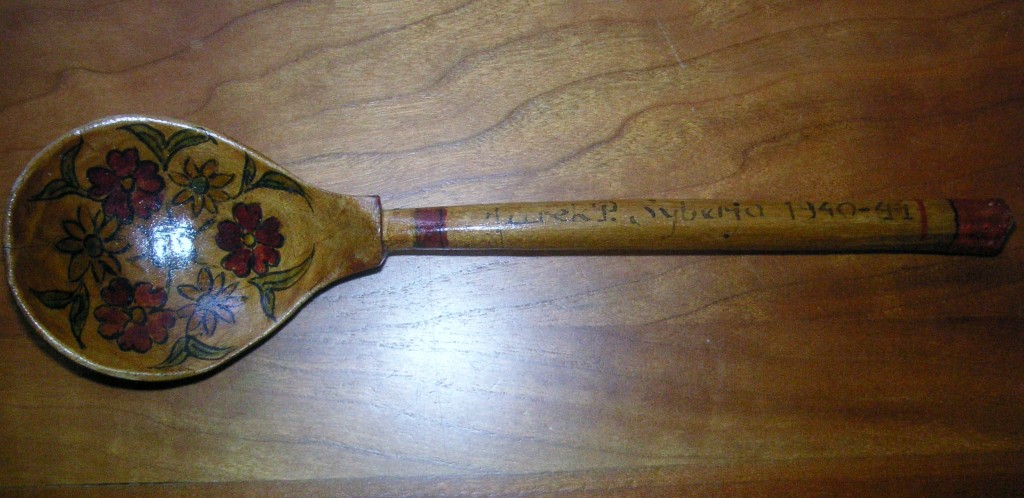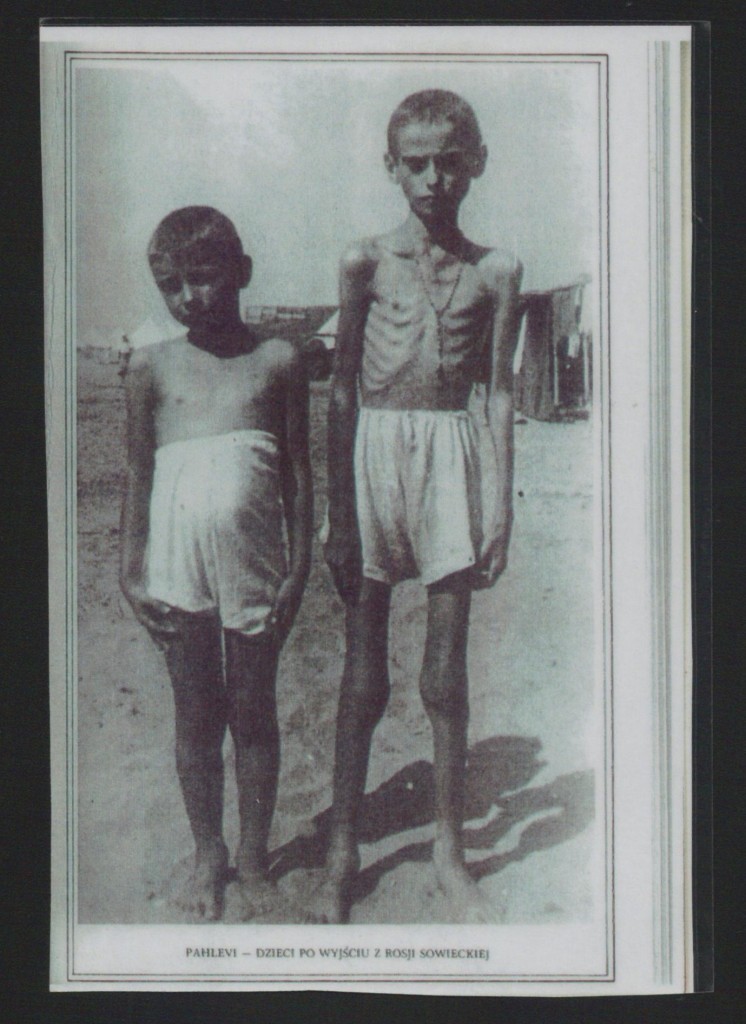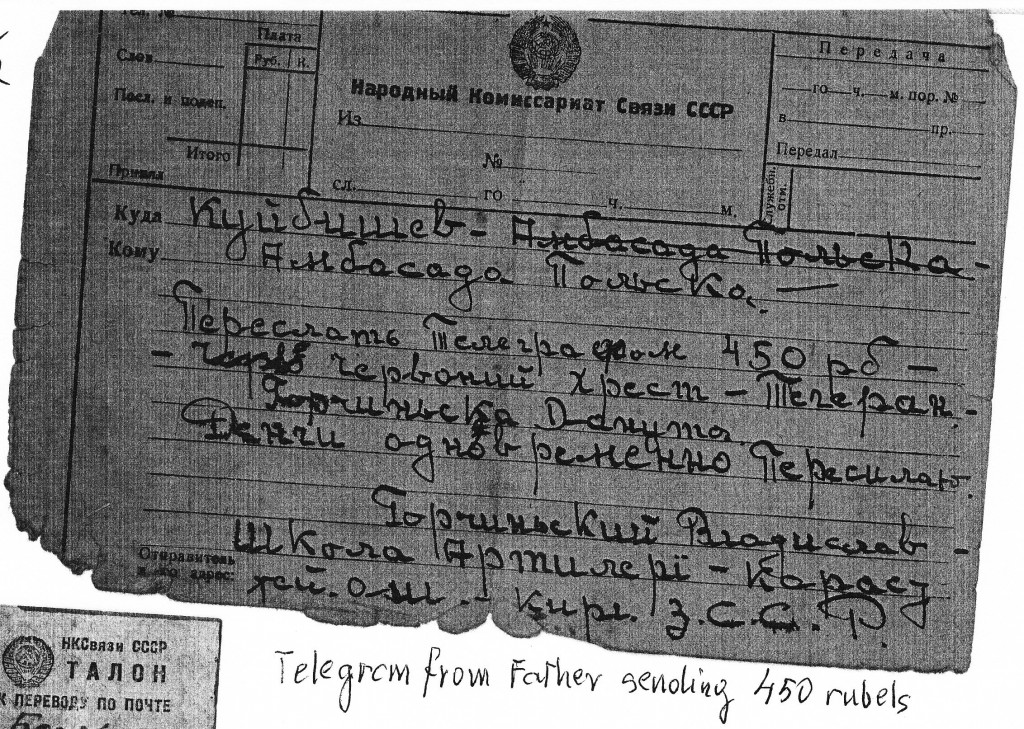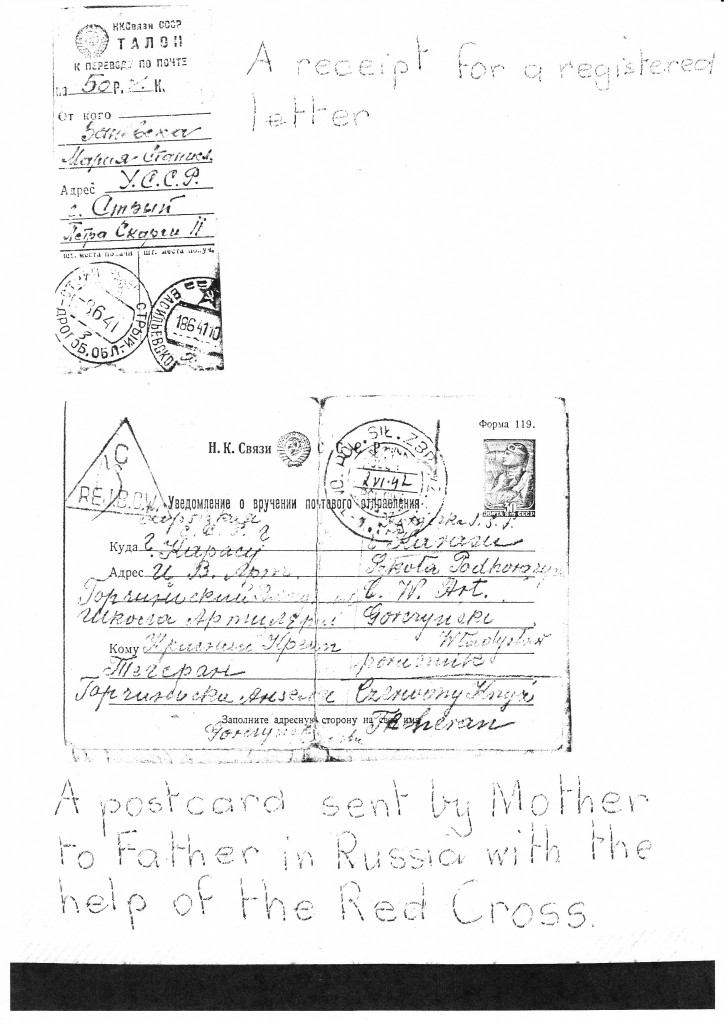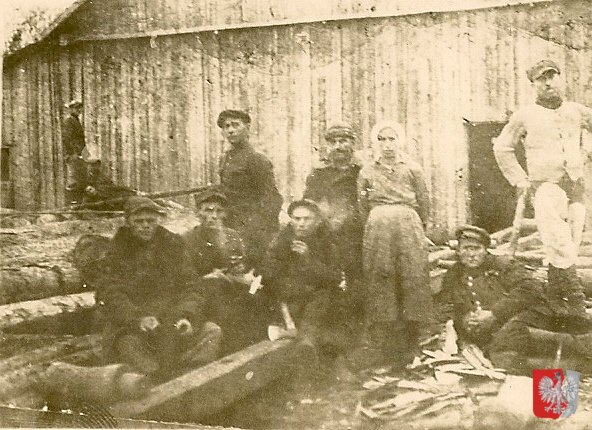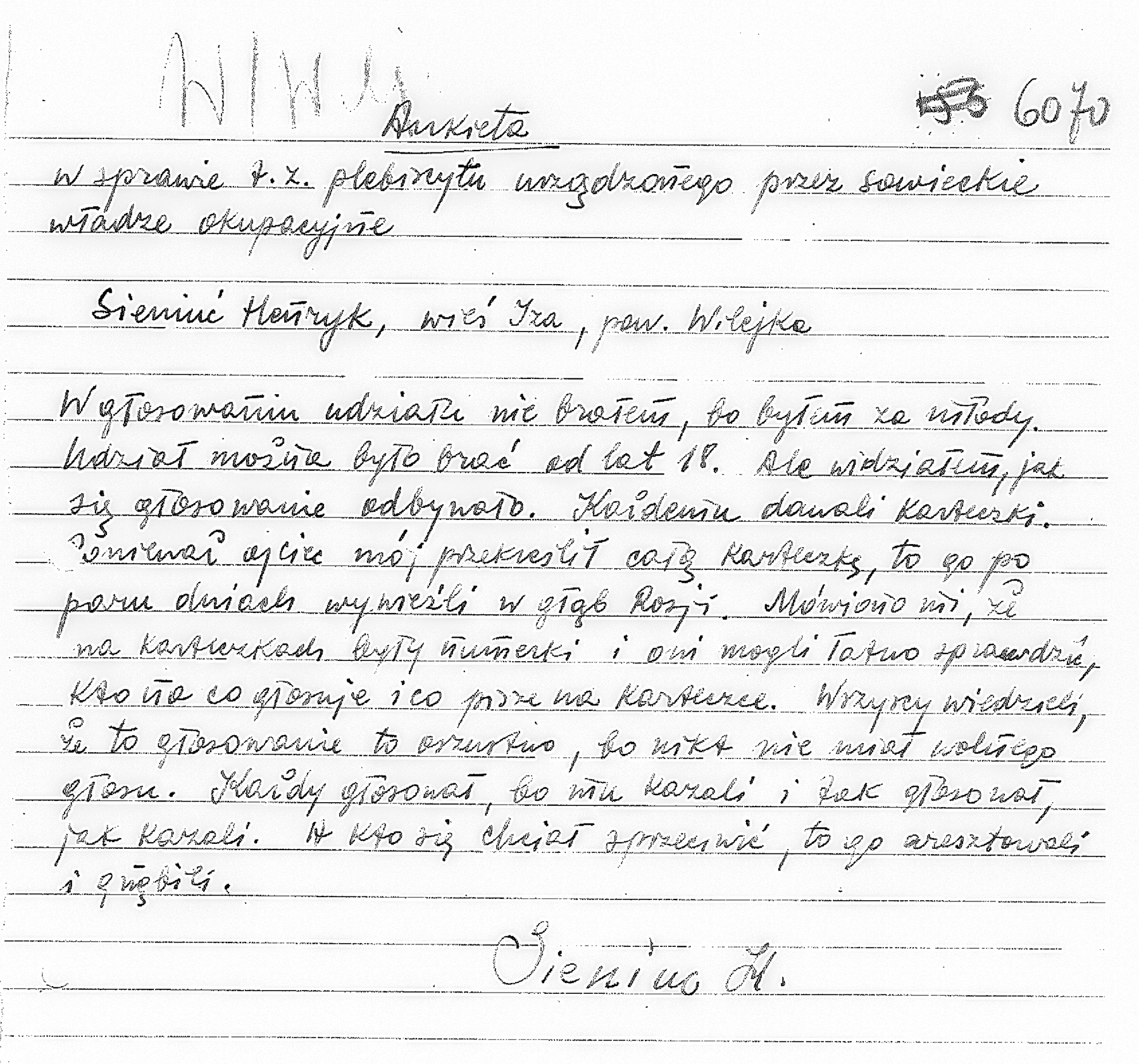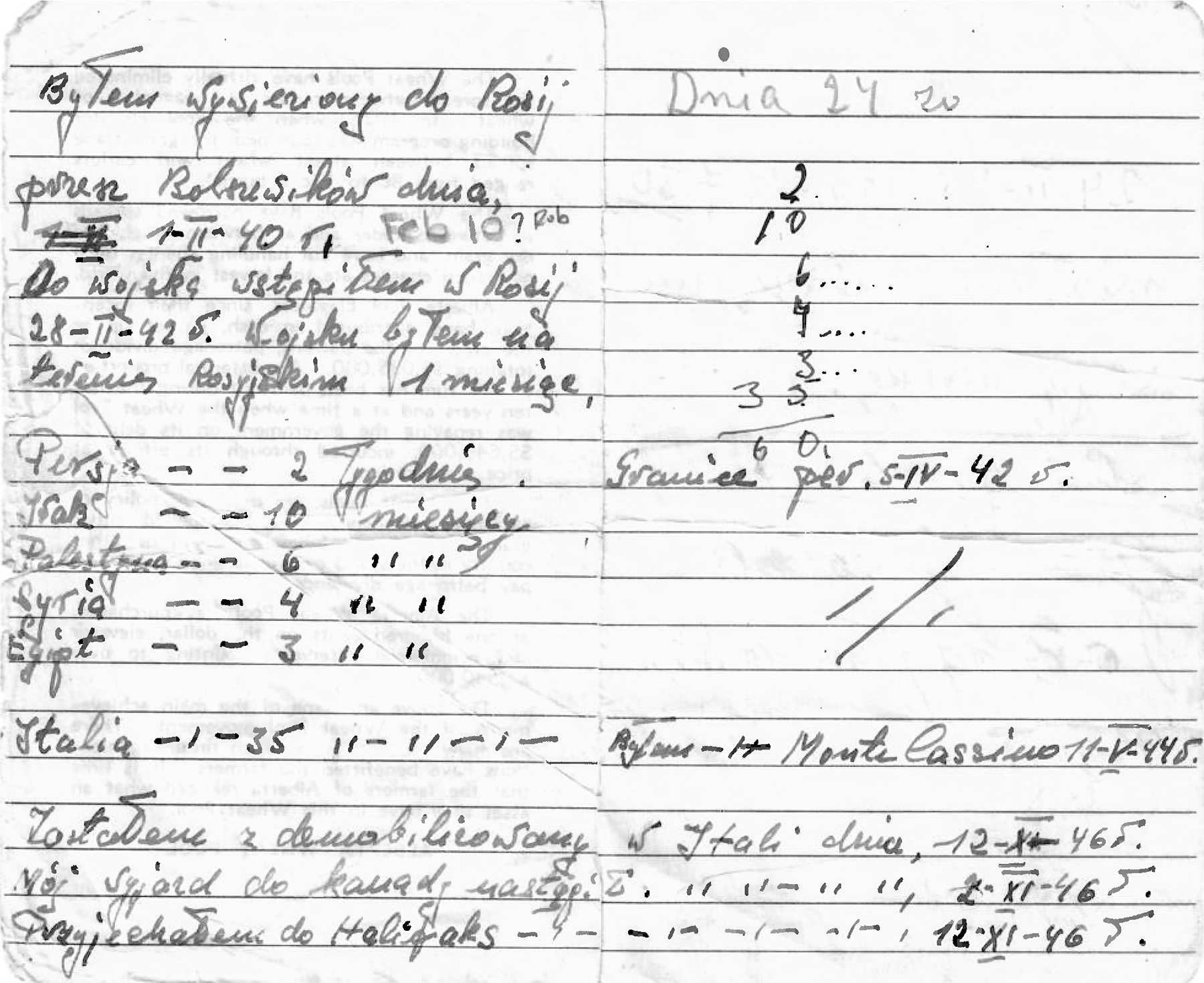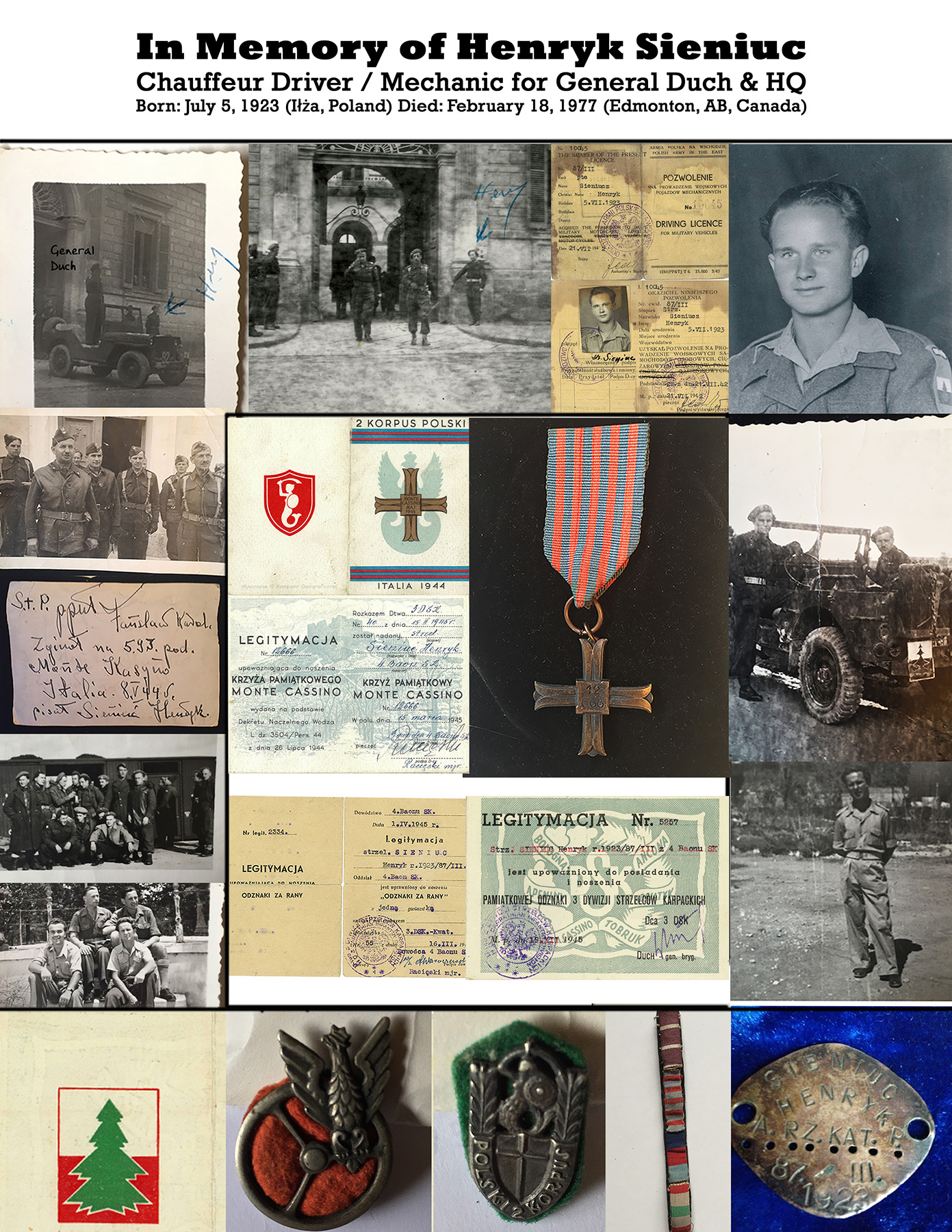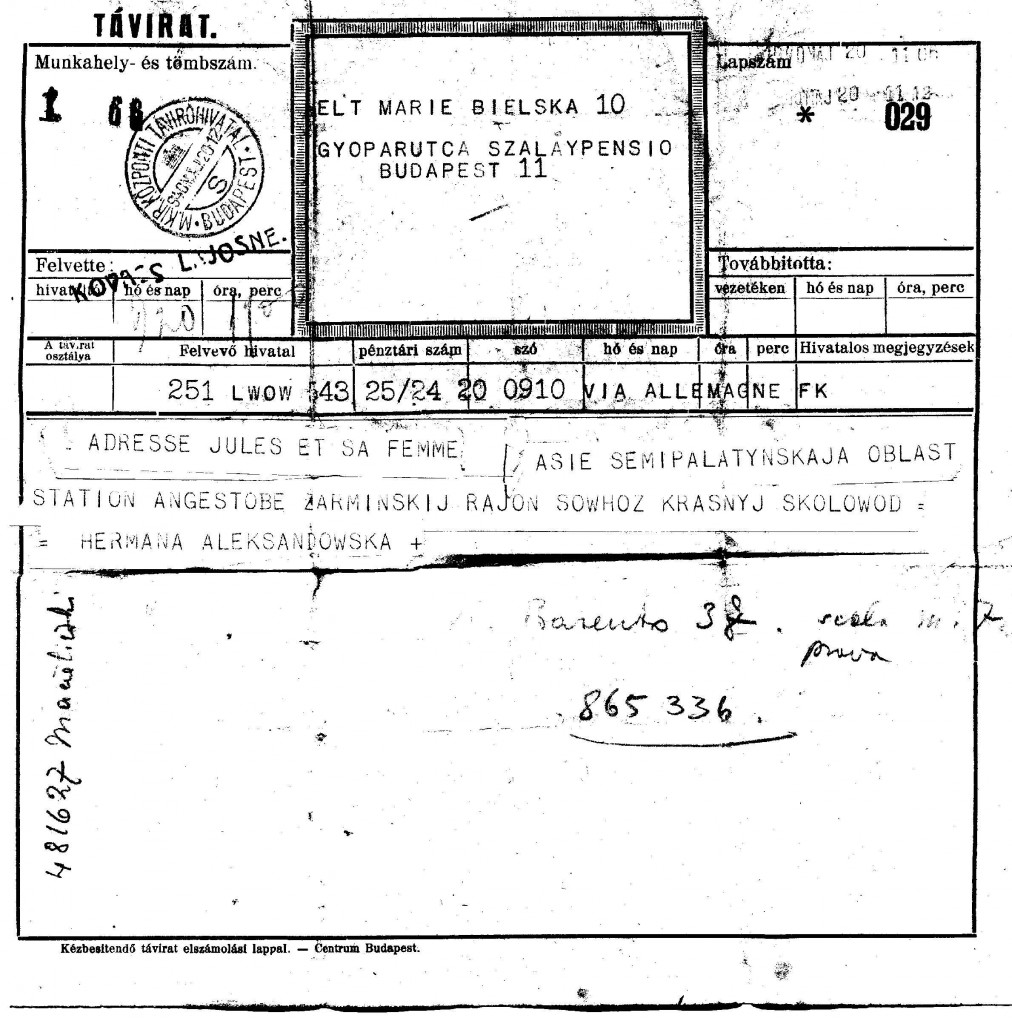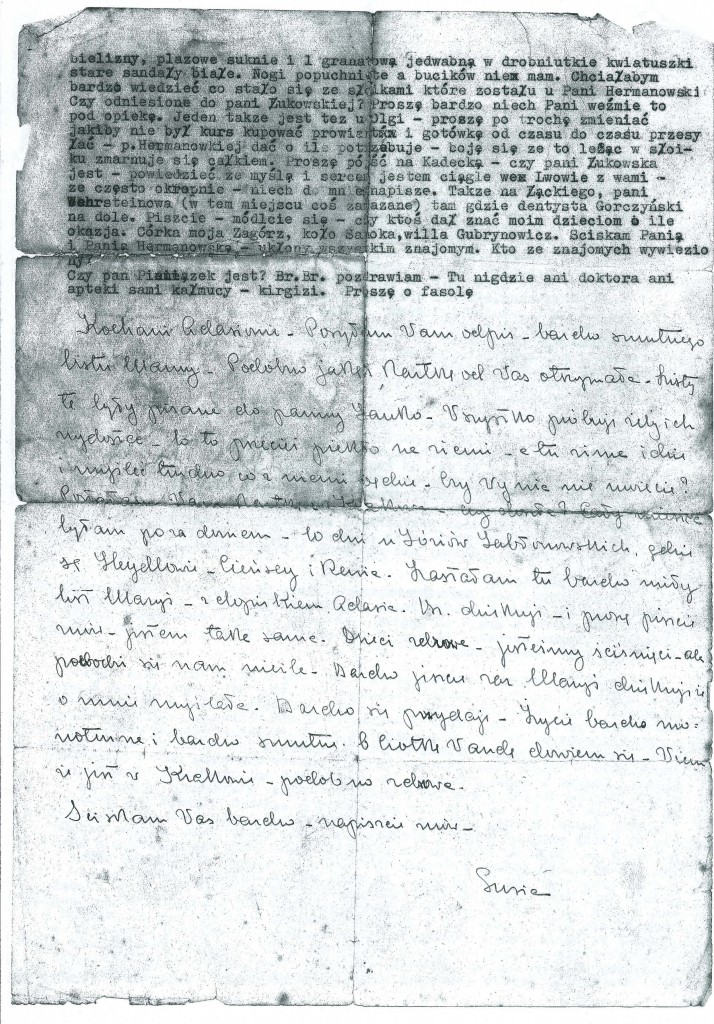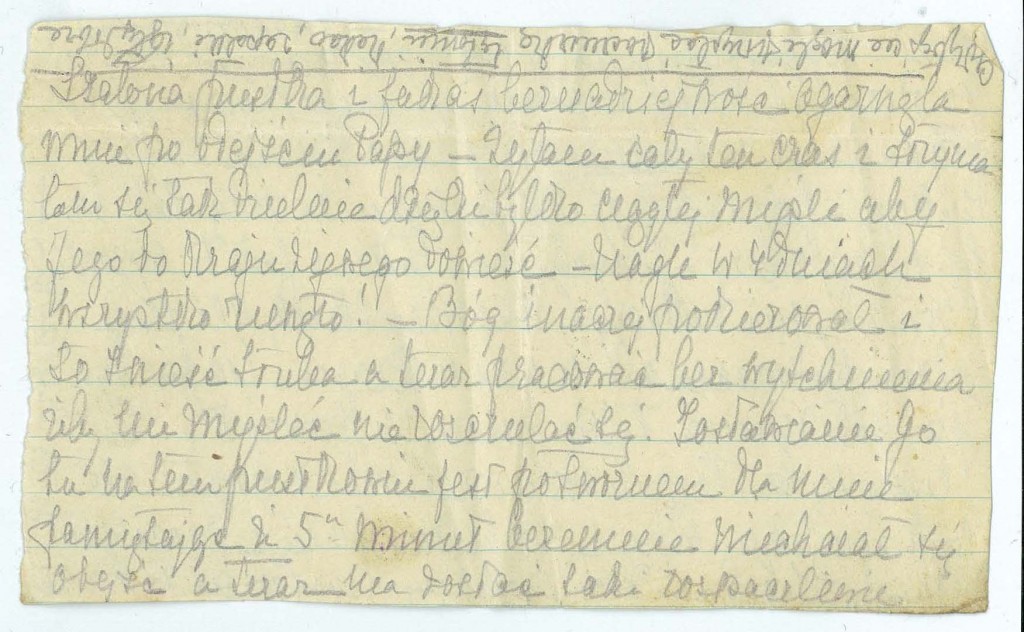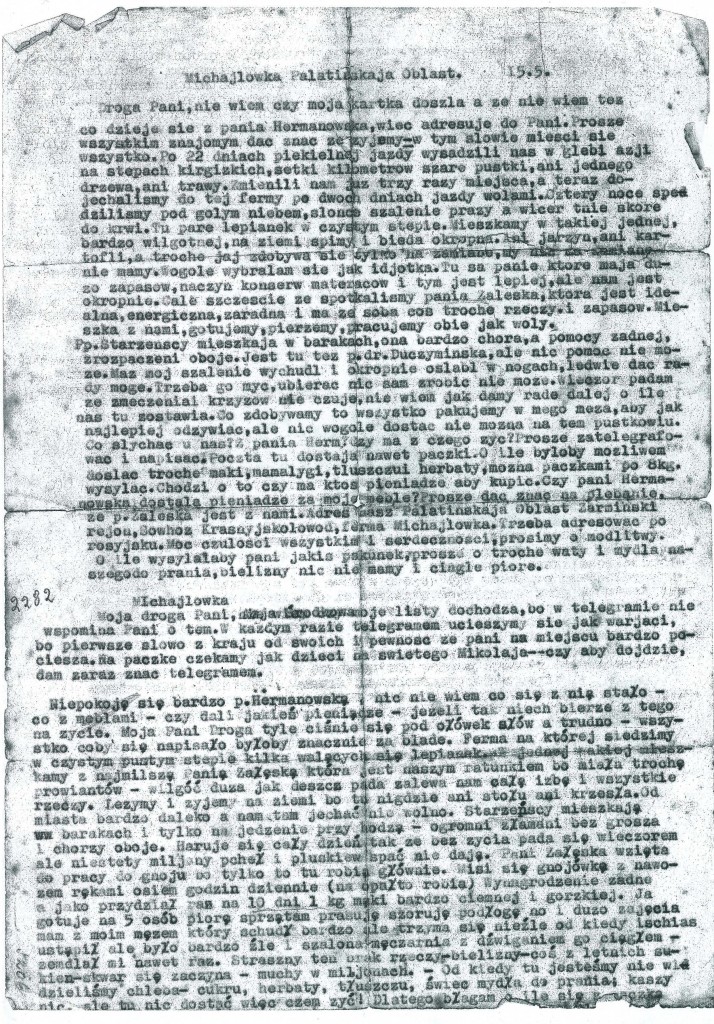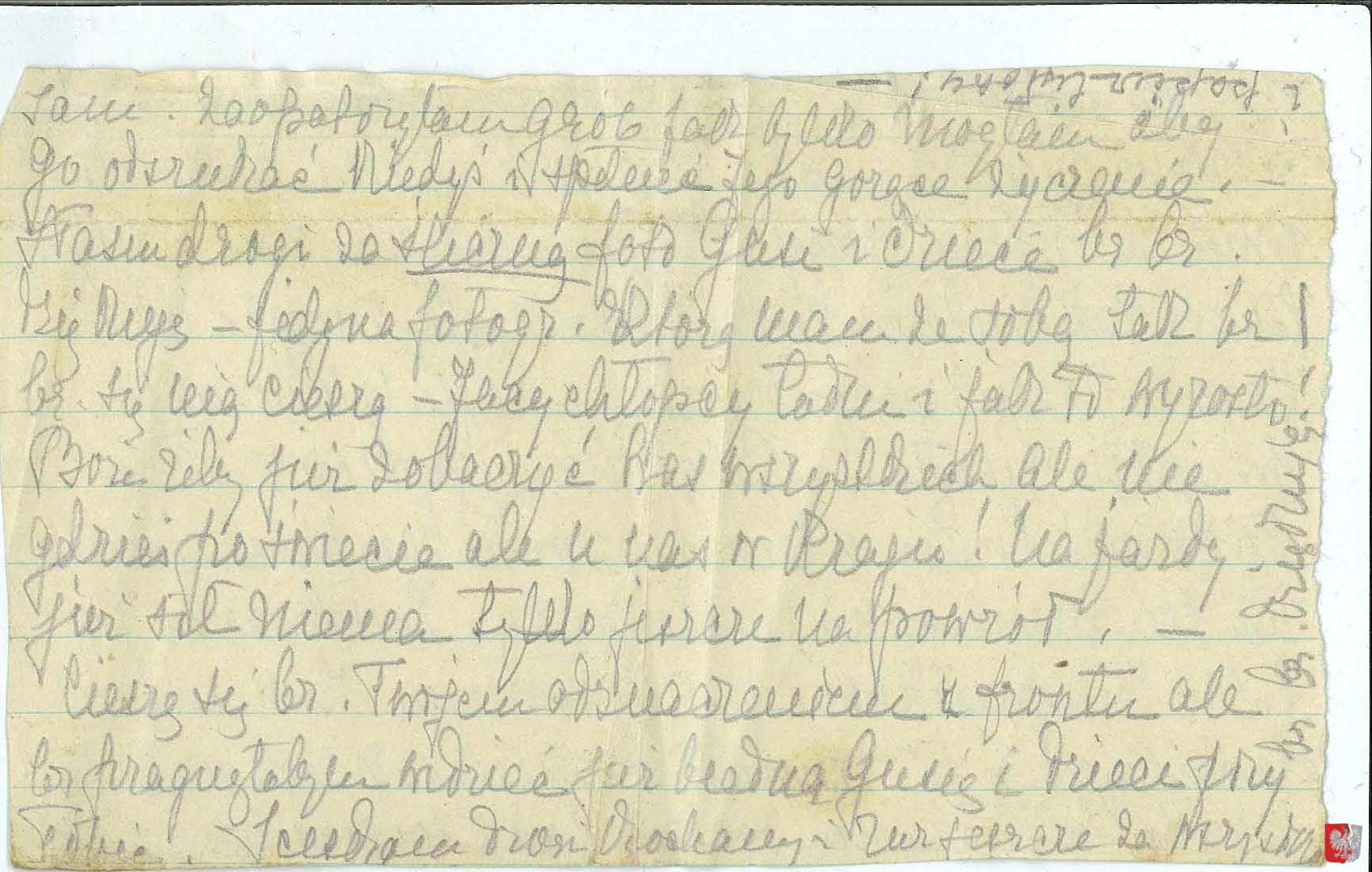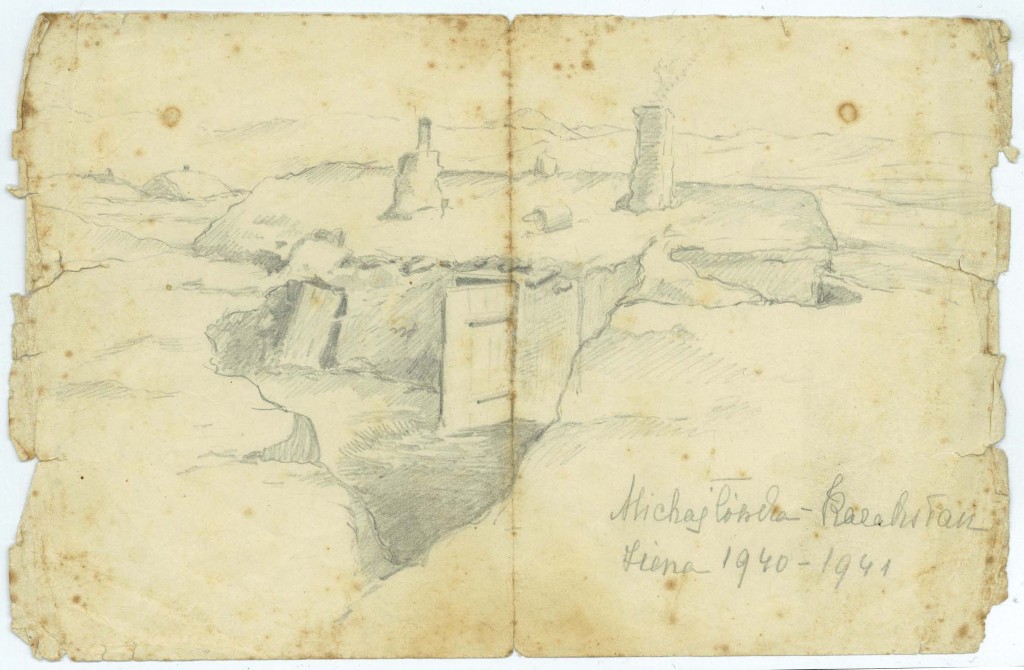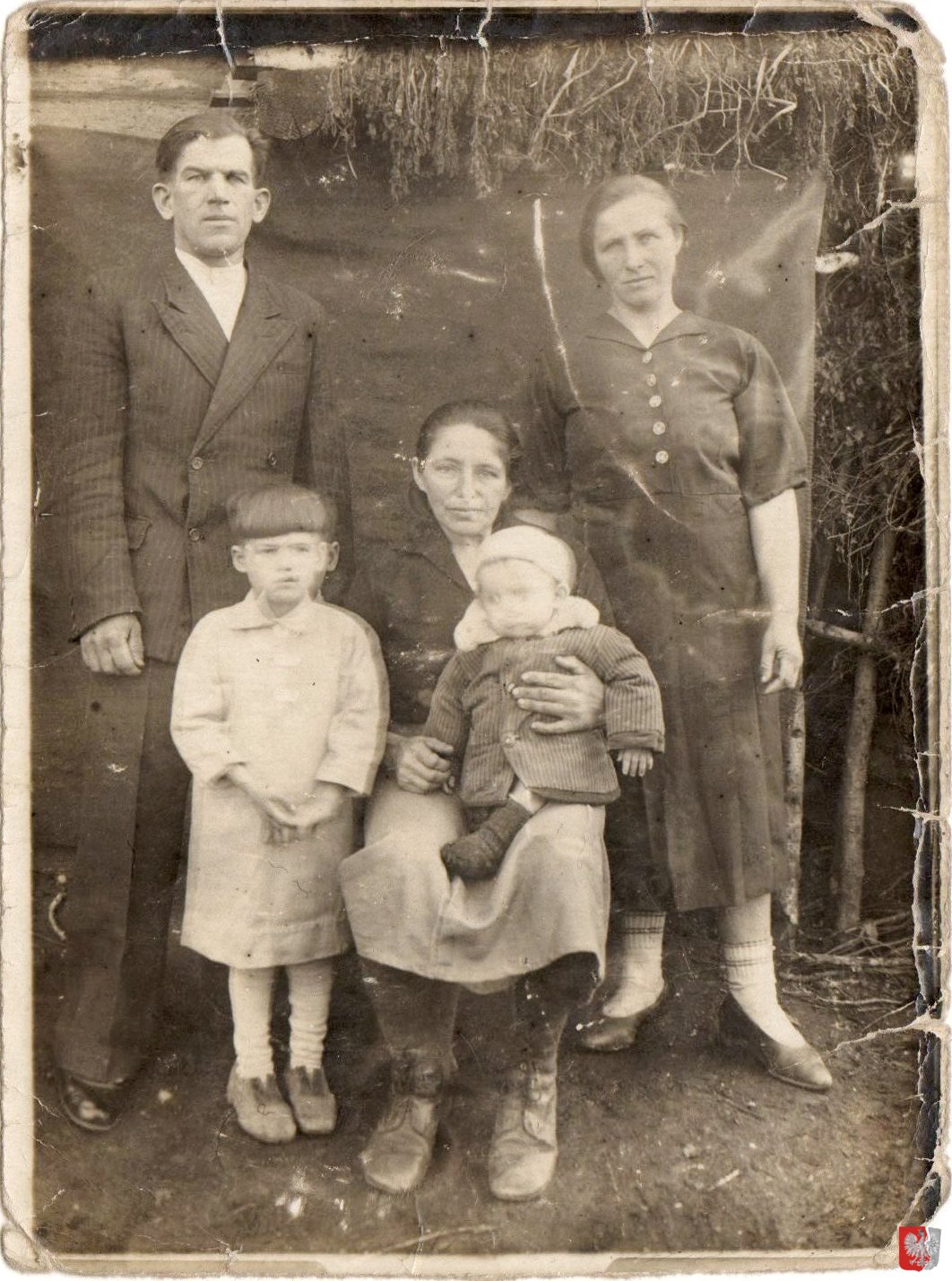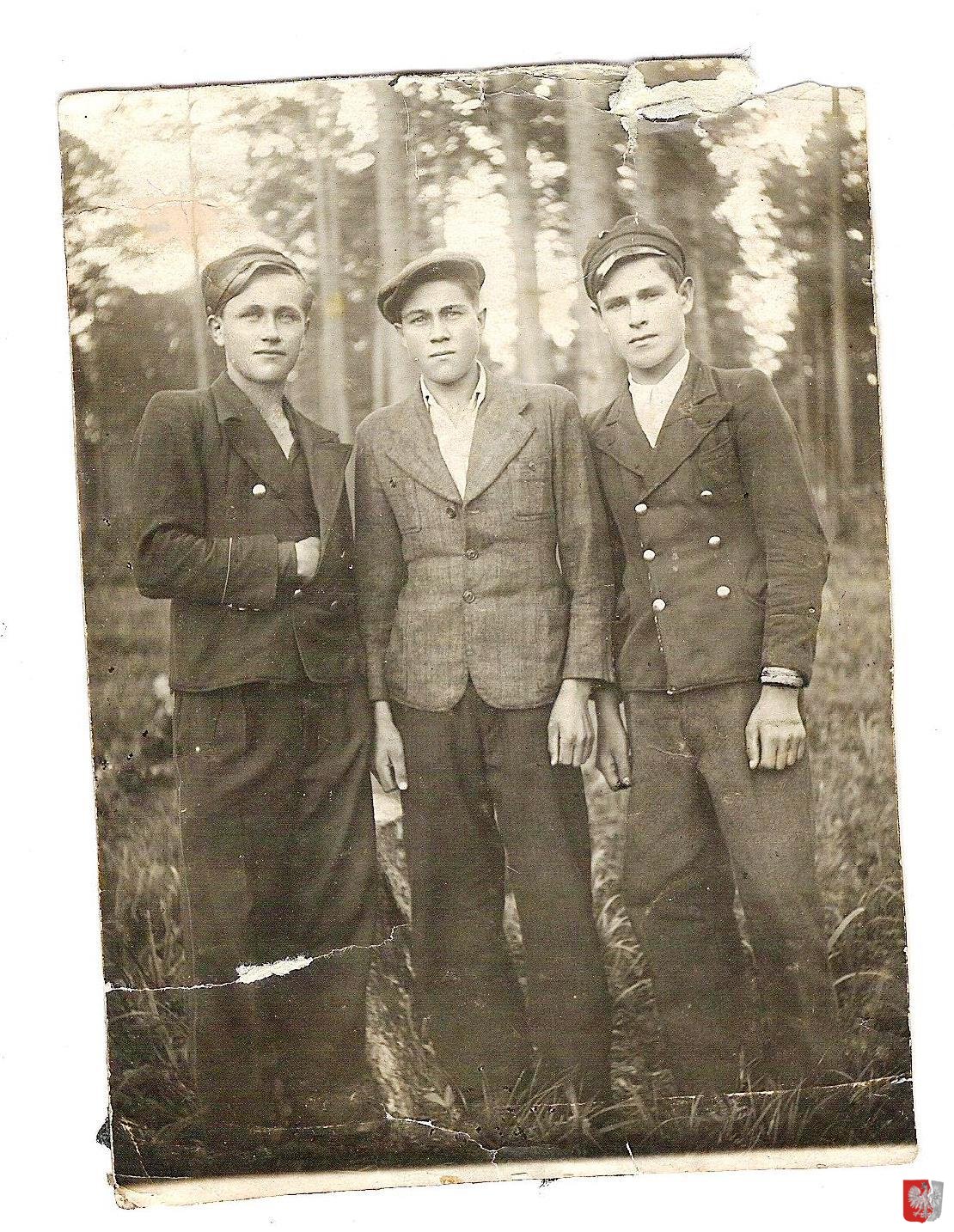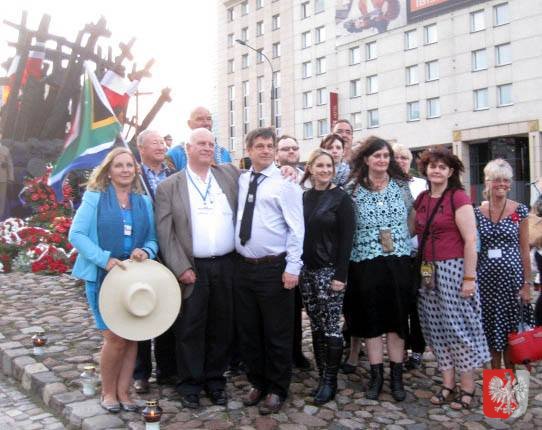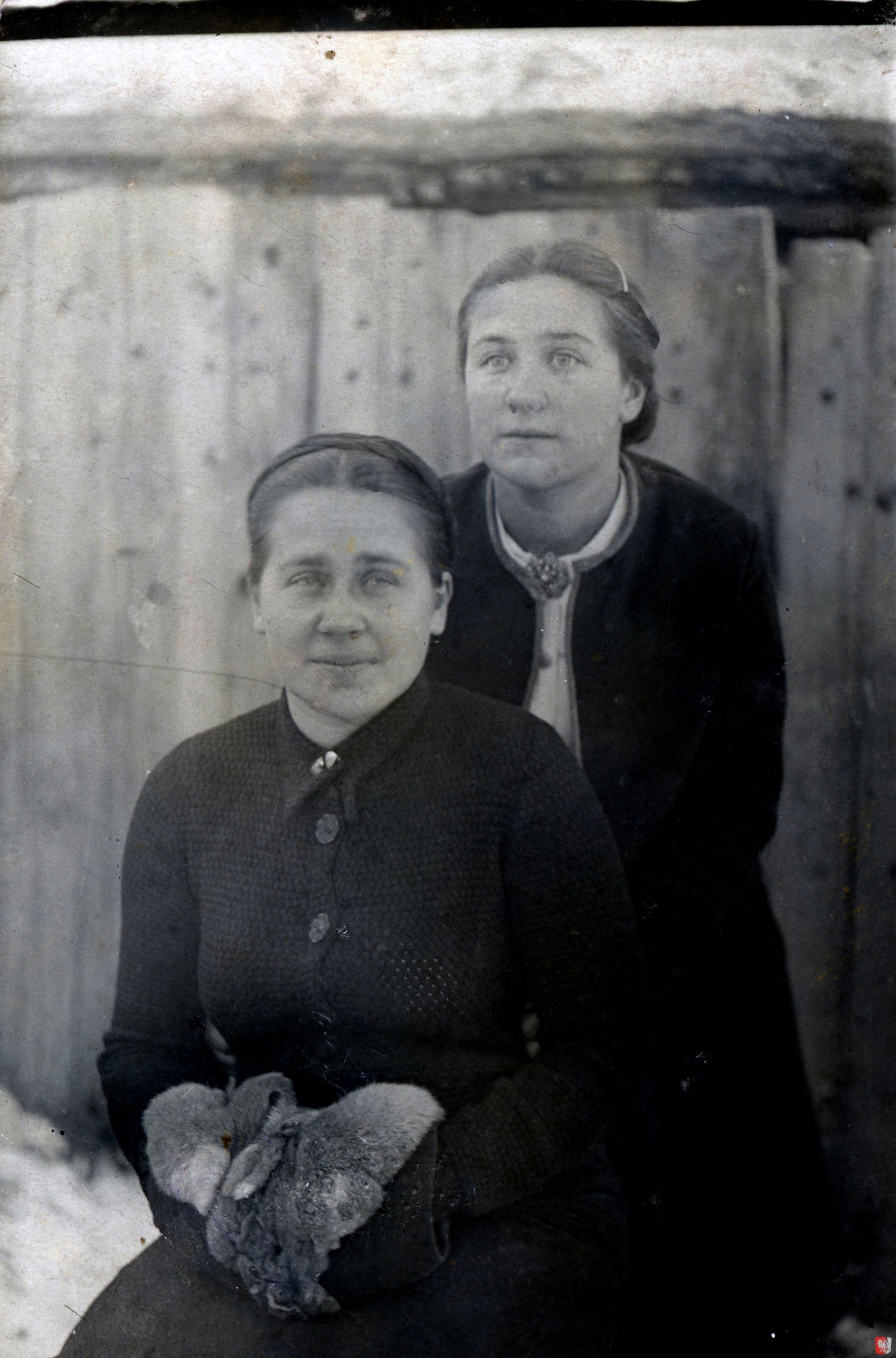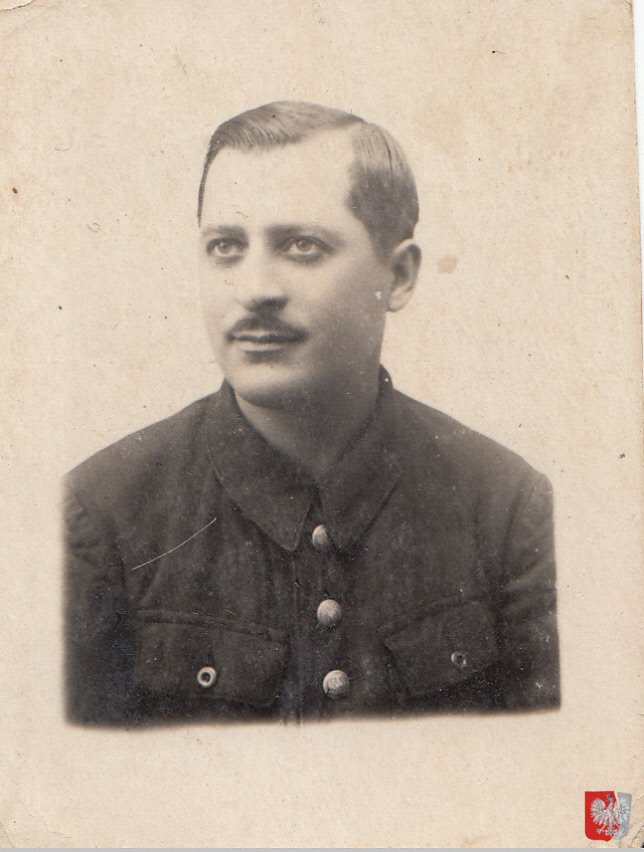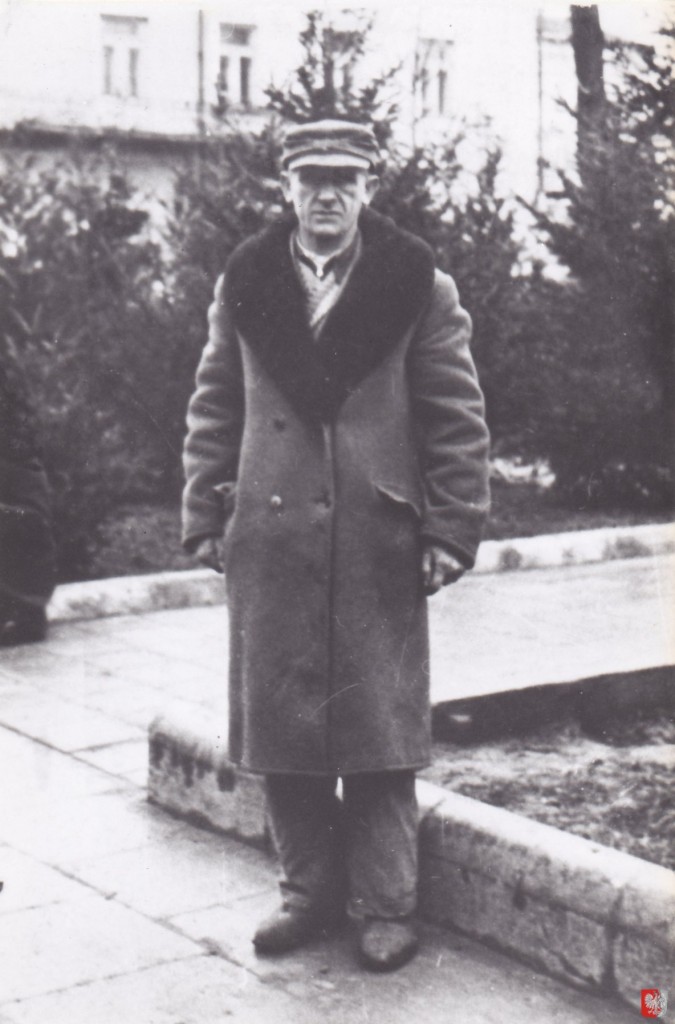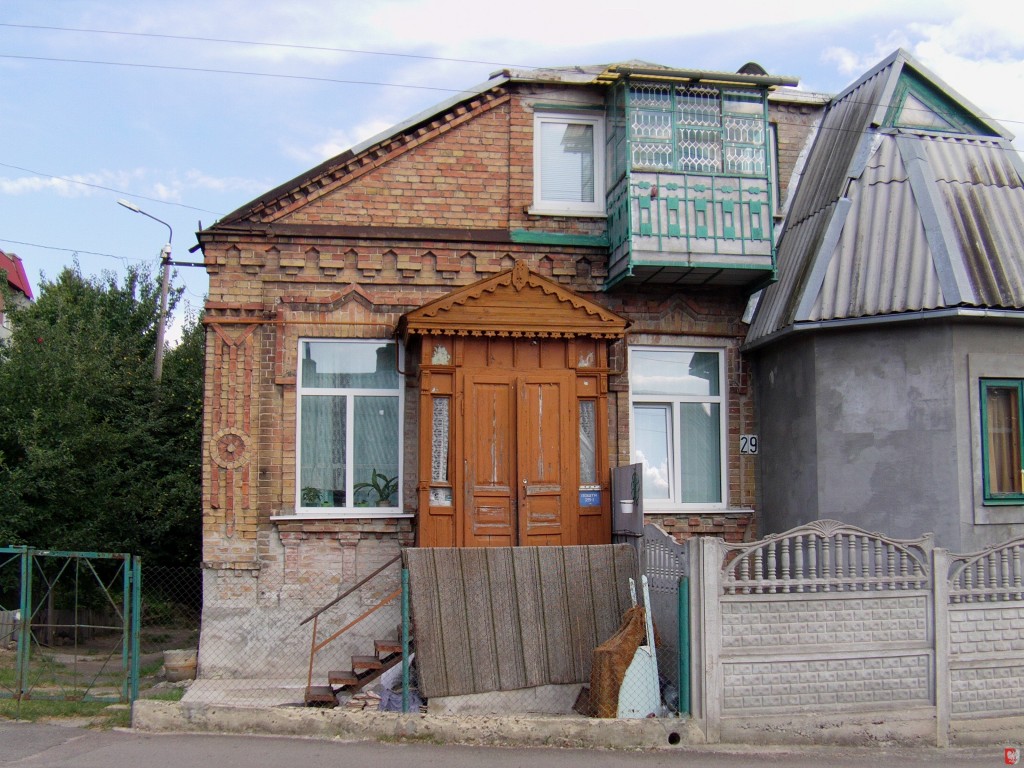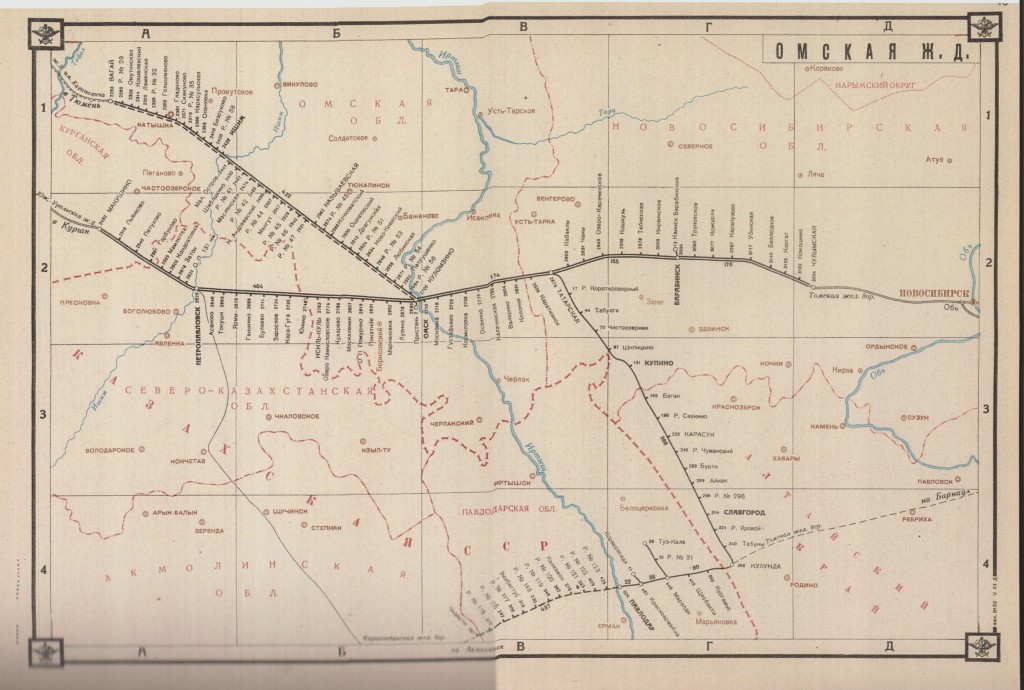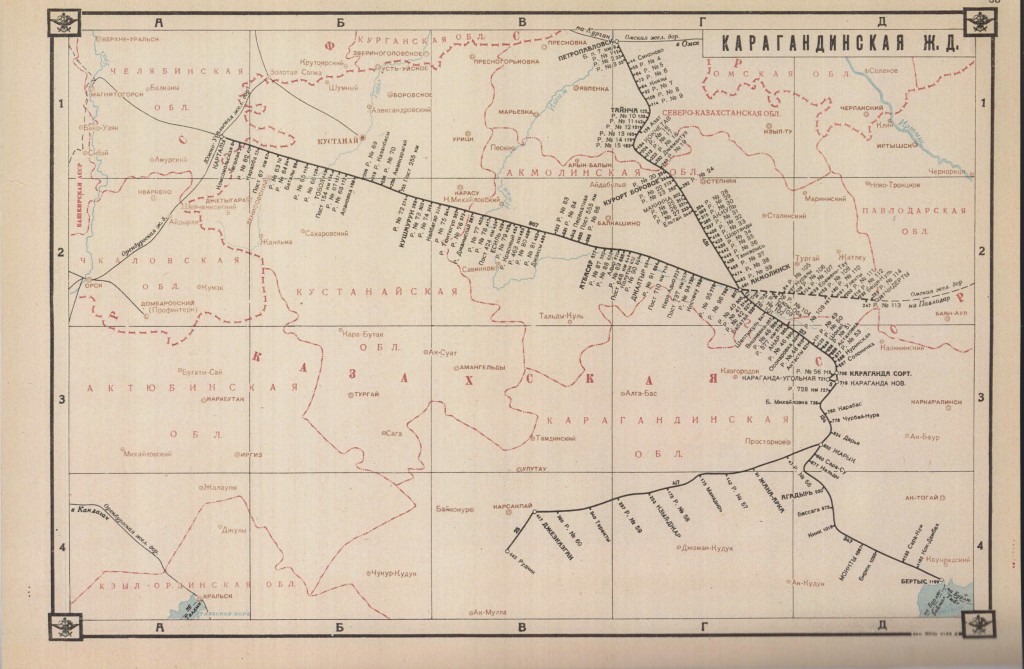Gallery – Soviet Mass Deportations
Soviet Travel Document_back
Soviet Travel Document_back
Henry Sokolowski
During WWII
Poland
Polish 2nd Corps in Italy (Gen. Anders)
TADEUSZ_LIST_OF_NAMES
TADEUSZ_LIST_OF_NAMES
Helen Bitner
Before WWII
Poland
Wooden spoon from exile
Handmade and painted wooden spoon given to Jurek Prociuk in Kazakhstan. The inscription reads Jurek P Syberia 1940-44
Halina Prociuk
After WWII
Poland
Frank Kustra’s Diary
Little diary that Frank Kustra kept from deportation until arriving in Australia - he smuggled it out of USSR
Frank Kustra
During WWII
Frank and Tadeusz Kustra (starving children)
Frank and Tadeusz Kustra (starving children)
Frank Kustra
During WWII
Karasu, Uzbekistan, March 1942
Scanned photo of Uzbek huts
Danuta Morgan
During WWII
Uzbekistan
Karasu
My Mother's last letter to Father
My Mother's last letter to Father via Red Cross. 2.4.1942 from Teheran to Karasu in Uzbekistan.
Danuta Morgan
During WWII
Iran
Teheran
Telegram from father
Telegram from Father, sending 450 rubels.
Danuta Morgan
During WWII
Postcard from Russia
Postcard from my mother to my father. Sent from Russia, in Russian.
Danuta Morgan
During WWII
Russia
Labour camp in Russia
Photo has come into Eugenia's possession from a collection that she inherited from a child who left the ship in Bombay on the journey to New Zealand.
Eugenia Smolnicka
During WWII
Soviet Union
KARTA reference
In June 1940, whilst living in Lwow, Edward was arrested by the NKVD and deported to a Gulag near Rybinsk in Russia.
Original now in the USHMM Collection
During WWII
Poland
Lwow
Henry Sieniuc Ankieta (Questionaire about Soviets)
A Questionnaire (original handwritten document is on file at Hoover WWII Institute, USA)
(written by Henryk Sieniuc sometime after leaving the Soviet prison detention camp after joining Anders Army, English Army 8th Division)
Regarding a so-called plebiscite organized by soviet occupation authorities.
Sieniuc Henryk, Iza village, Wilejka county
English Translation:
"I didn't participate in the elections, because I was too young. One could vote from the age of eighteen. But I saw how voting took place.
Everyone was handed a piece of paper. Since my father crossed out the entire page, after several days he was sent deep into Russia.
I was told that on those pieces of paper there were numbers, and they could easily verify who votes for what and what one writes on the paper. Everyone knew that the voting was a fraud, because no one had a free voice. One voted as one was ordered to. Who was against it, got arrested and persecuted. "
Signed Henryk Sieniuc
Hoover Institute, University of Santiago, U
Henryk Sieniuc- his handwritten WWII timeline
Henryk Sieniuc WWII Timeline
(per his handwritten notes)
• Henryk Sieniuc’s father Bronislaw Sieniuc (a local policeman) was arrested by Soviets in 1939 for refusing to fill out a questionnaire
and sent to Siberia.
See Henryk Sieniuc Ankieta Document (Questionaire on file at Hoover WWII Institute, Univ Santiago, USA)
• Henry Sieniuc : “Sent to Russia” the day of Feb 1, 1940 ie. forced labour in Siberia
• His brothers and sisters were also all departed to Russia – different locations in Siberia
• Henryk Sieniuc - "I was deported to Russia through the Bolshevik action, Oct, 1, 1940"
• Henryk Sieniuc - “I entered the army (Anders Army) in Russia Feb 28, 1942”
"I stayed 6 weeks in Russia territory"
• Henry Sieniuc - “ Arrived in the Middle East (Persia) April 5, 1942”
Persia 2 Weeks
Iraq 10 months
Palestine 6 months
Syria 4 months
Egypt 3 months
Italy 1 year and 35 days
• "I was in Monte Cassino, 11 May 1944"
• "I was demobilized in Italy on October 12, 1946"
• " I left by ship for Canada, November 2, 1946"
• " I arrived in Halifax, Canada Nov 12, 1946"
Personal records
In Memory oHenryk Sieniuc, Driver Mechanic for HQ, Monte Cassino Medal # 12666
In Memory of Henryk Sieniuc, Driver Mechanic for HQ, Monte Cassino Medal # 12666
Letter from exile Eleanor Bielski in Kazakhstan
Juliusz Aleksander Roman Bielski (then aged 78 years) and his wife Eleanor Maria Jadwiga (nee Jablonowska) were deported from Lwow in April 1940 to Semipalatynsk Oblast, Station Angestobe, Zarminskij Rajon, Sowjoz Krasnyj Skolowod. After deportation nobody in Lwow knew where they had been deported to. This telegram identified their address. It was sent to Marys Bielska - wife of their son Adam Bielski. Adam escaped from Lwow to Hungry and fought in the Polish Army, first in France and then in the UK.
Count Jerzy Krasicki
During WWII
Kazakhstan
Semipalatynsk Oblast
Letter from exile Eleanor Bielski in Kazakhstan Page 2
Juliusz Aleksander Roman Bielski (then aged 78 years) and his wife Eleanor Maria Jadwiga (nee Jablonowska) were deported from Lwow in April 1940 to Semipalatynsk Oblast, Station Angestobe, Zarminskij Rajon, Sowjoz Krasnyj Skolowod. This is page 2 of a 2 page letter from Eleanor. The handwritten portion of the typed letter is signed by "Gusia" (Eleanor's daughter, Jadwiga), saying that the typed text was transcribed from a letter handwritten by her moth.
Count Jerzy Krasicki
During WWII
Kazakhstan
Semipalatynsk Oblast
Letter from exile Eleanor Bielski in Kazakhstan Page 2
Juliusz Aleksander Roman Bielski (then aged 78 years) and his wife Eleanor Maria Jadwiga (nee Jablonowska) were deported from Lwow in April 1940 to Semipalatynsk Oblast, Station Angestobe, Zarminskij Rajon, Sowjoz Krasnyj Skolowod. This is page 2 of a 2 page handwritten letter from Eleanor back to a friend still in Lwow. It refers a "Gusia" (her daughter Jadwiga) and children (Jerzy Krasicki and his brother).
Count Jerzy Krasicki
During WWII
Kazakhstan
Semipalatynsk Oblast
Letter from exile Eleanor Bielski in Kazakhstan Page 1
Juliusz Aleksander Roman Bielski (then aged 78 years) and his wife Eleanor Maria Jadwiga (nee Jablonowska) were deported from Lwow in April 1940 to Semipalatynsk Oblast, Station Angestobe, Zarminskij Rajon, Sowjoz Krasnyj Skolowod. This is page 1 of a 2 page letter from Eleanor. The handwritten portion of the typed letter is signed by "Gusia" (Eleanor's daughter, Jadwiga), saying that the typed text was transcribed from a letter handwritten by her moth.
Count Jerzy Krasicki
During WWII
Kazakhstan
Semipalatynsk Oblast
Letter from exile Eleanor Bielski in Kazakhstan Page 1
Juliusz Aleksander Roman Bielski (then aged 78 years) and his wife Eleanor Maria Jadwiga (nee Jablonowska) were deported from Lwow in April 1940 to Semipalatynsk Oblast, Station Angestobe, Zarminskij Rajon, Sowjoz Krasnyj Skolowod. This is page 1 of a 2 page handwritten letter from Eleanor back to a friend still in Lwow. It refers a "Gusia" (her daughter Jadwiga) and children (Jerzy Krasicki and his brother).
Count Jerzy Krasicki
During WWII
Kazakhstan
Semipalatynsk Oblast
Drawing of dug-out in Kazakhstan by Eleanor Bielski
Juliusz Aleksander Roman Bielski (then aged 78 years) and his wife Eleanor Maria Jadwiga (nee Jablonowska) were deported from Lwow in April 1940 to Semipalatynsk Oblast, Station Angestobe, Zarminskij Rajon, Sowjoz Krasnyj Skolowod. This drawing of "ferma Michajlowka, Palatinskaja Oblast" was drawn by, and sent with a letter from, Eleanor back to Lwow. This is where Eleanor and Juliusz lived during their exile.
Count Jerzy Krasicki
During WWII
Kazakhstan
Semipalatynsk Oblast
Stanislaw Michulka and Family Siberia
Stanislaw Michulka his wife Franciszka and her Sister Aniela Krzesaj with Stanislaw two Children Janina and Jan who were the only two left in Siberia with Stanley and his wife before returning to Zmigrod Poland around 1946/47 Little Jan was Born in Siberia 1946 and Janina born in Siberia also around 1941 and later Died Zmigrod Poland in 1950 ?
Kazimierz Mihulka
After WWII
Russia
Mizgranka camp Novisabirsk/Tomsk, Novisabirsk/Tomsk Oblast
Kazimierz and Pals Siberia
Kazimierz in Middle of picture with two pals in Mizgranka Siberia near Tomsk-Novisabirsk
Kazimierz Mihulka
During WWII
Russia
Tomsk-Novisabirsk
Kresy Siberia Team at the Monument to the fallen and murdered in the East
Kresy Siberia Team at the Monument to the fallen and murdered in the East
Poland
Warsaw
Sisters in Kazahkstan
Irena and Niusia Rytwinska, in 1941
Richard Starostecki
During WWII
Kazakhstan
Hersz Krajdstejn
During WWII
Soviet Union
Jozef Moskal
Photo of Jozef Moskal (of Kosciuskow osada)
Leon Kustra
During WWII
Soviet Union
Archangelsk, Lenski
USSR Railway Map 1941
Shows the railway network across the whole of the USSR in 1941
During WWII
Russia
Home of Pacewicz family, Równe
Home of PP Jan Pacewicz, wife Julia Pacewicz and children Józef, Jadwiga and Władysław Rowne, Ul Dworecka 29/1, from where Julia, Jadwiga and Władysław were deported from on the 13th April 1940 to Kazkahstan.
Anna Pacewicz
After WWII
Ukraine
Rivne
USSR Railway Map – Kazakhstan – 1941
Shows the railway network across Kazakhstan in 1941. Along the top is Petropavlovsk on the Omsk line. This would most likely have been the route my family would have taken. The nearest big city to their place of forced labour was Petropavlovsk.
During WWII
Russia
USSR Railway Map – Kazakhstan – 1941
Shows the railway network across the Kazakhstan in 1941. Akmolinsk is the central junction. Petropavlovsk, at the very top, would have been the nearest main station to the place of my family's deportation and forced labour.
During WWII
Russia



